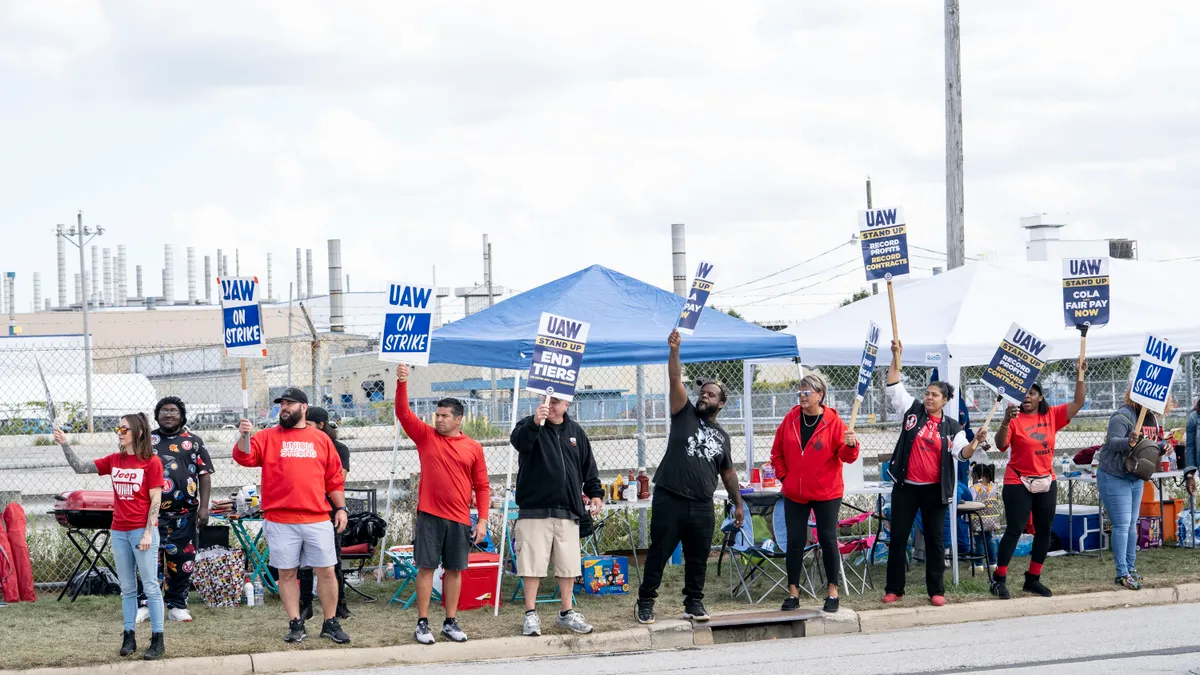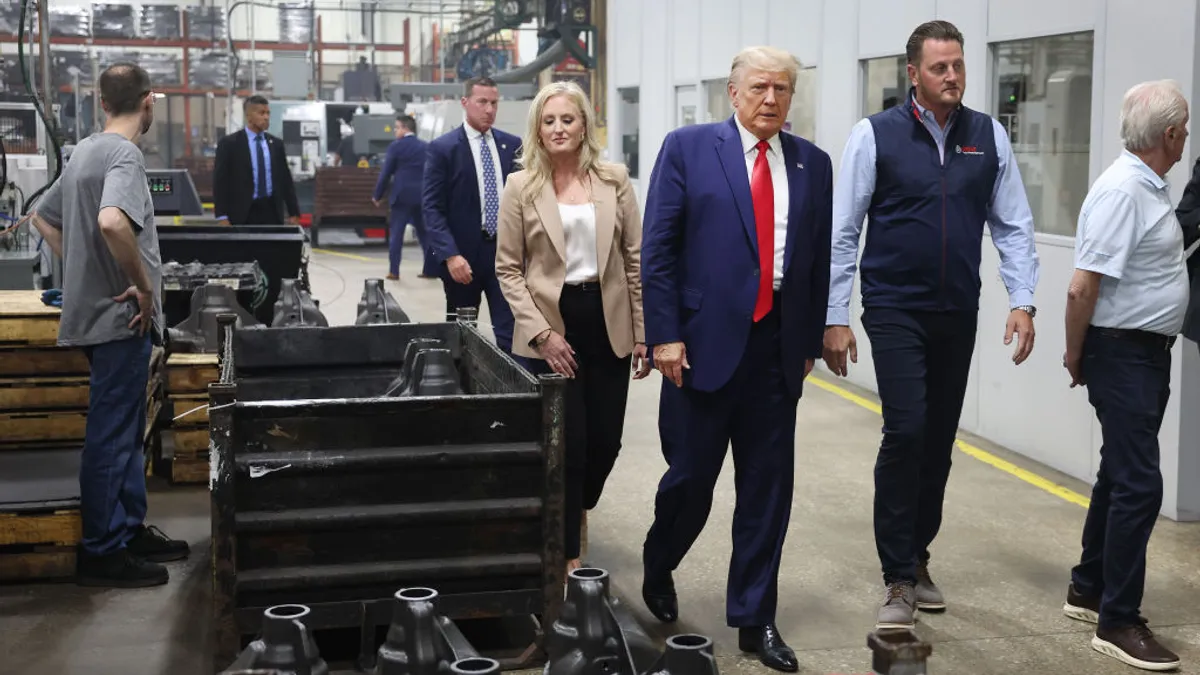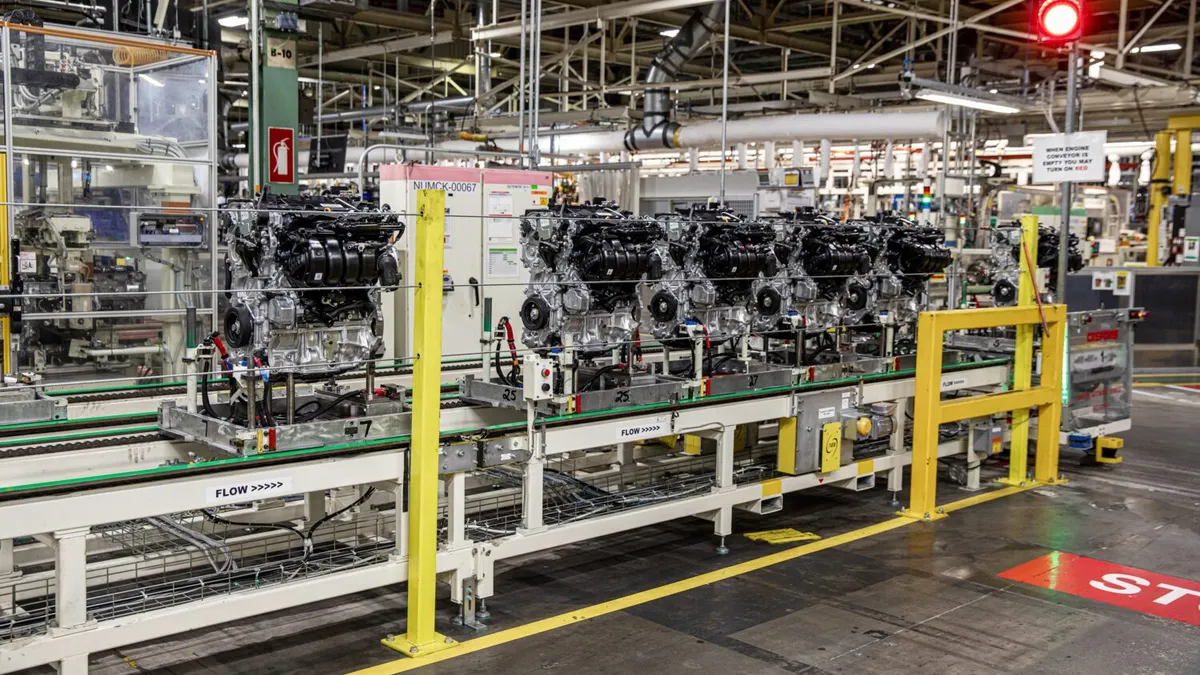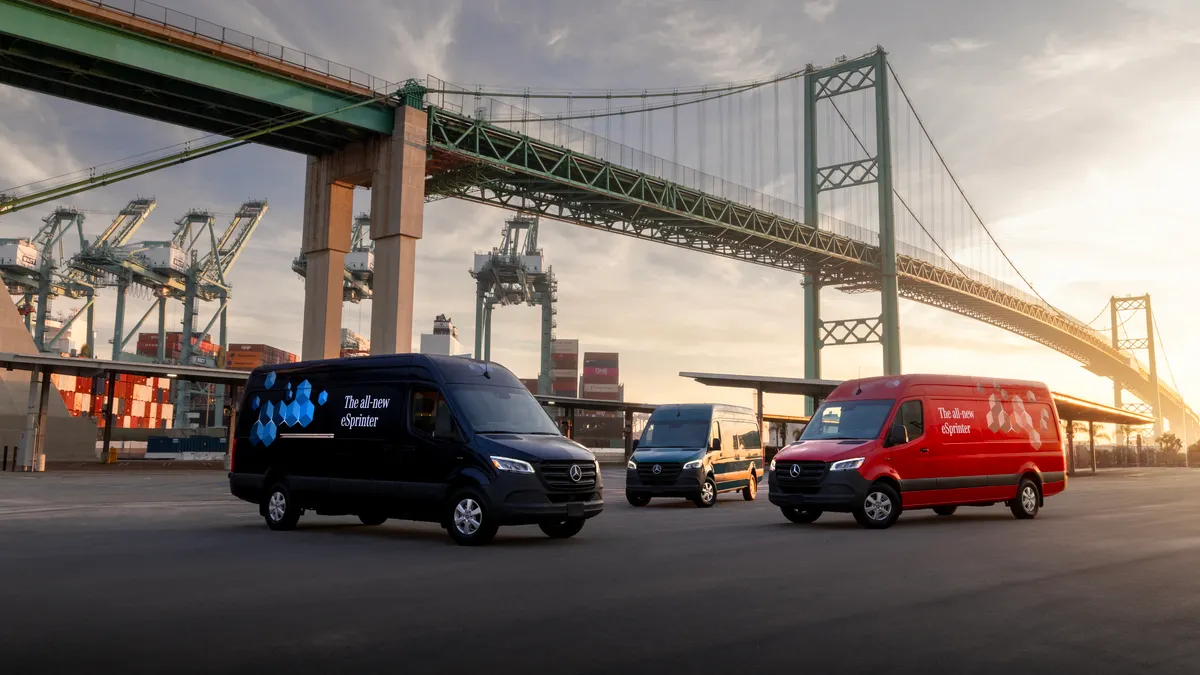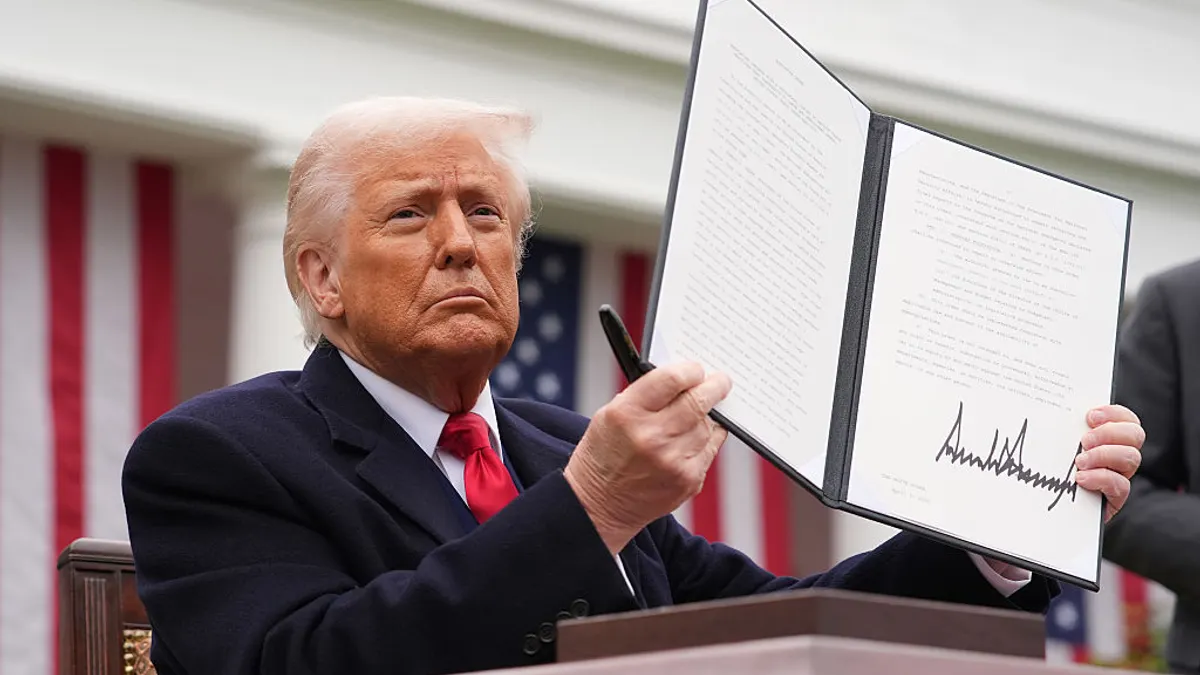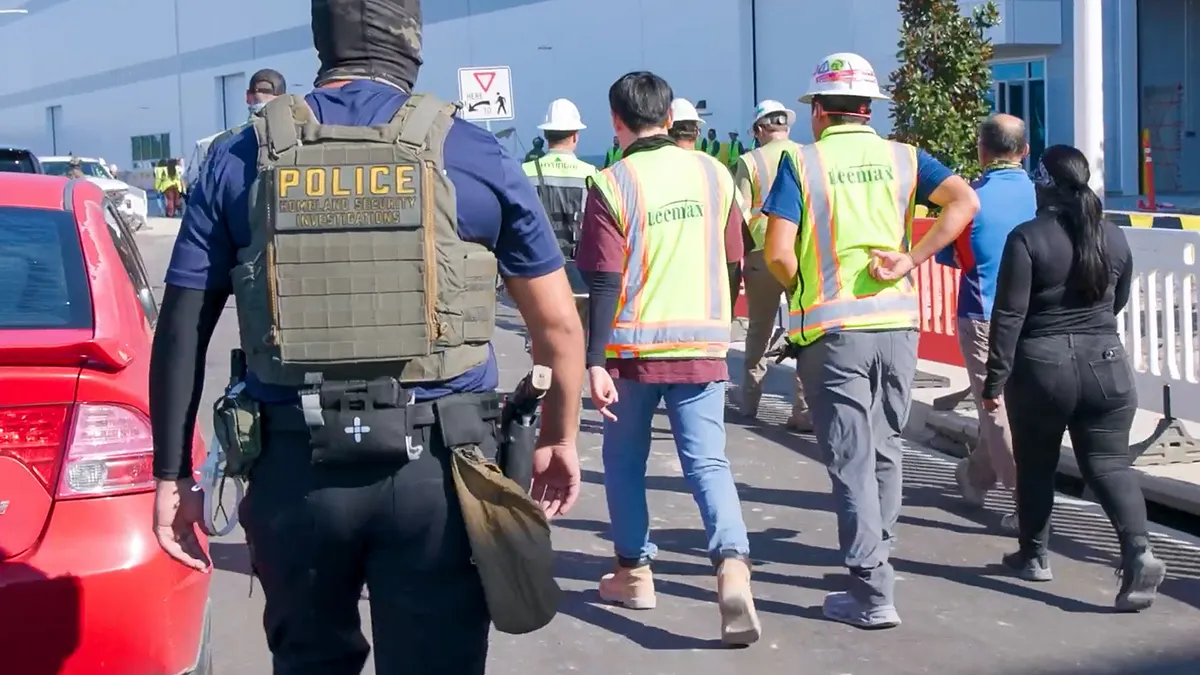Last week, when members of the United Auto Workers first walked off the line to strike the Big Three automakers — General Motors, Ford Motor Co. and Stellantis — there were cheers and fists in the air as the union members left work at GM’s Wentzville, Missouri, plant, Ford’s Michigan Assembly plant in Wayne, Michigan, and Stellantis’ Toledo, Ohio, plant. The striking workers had just received word the union would target their plants.
The UAW is relying on an unpredictable “stand-up” strategy to win higher wages, better job security and an end to the two-tiered wage system that has some workers earning lower pay and worse benefits than others doing the same job. The union is targeting specific plants as it strikes GM, Ford and Stellantis simultaneously.
The new strategy’s “biggest advantage for the UAW is it creates uncertainty at the table” and gives the union “some sense of control of how [the strike] evolves,” said Arthur Wheaton, director of labor studies at Cornell University’s School of Industrial and Labor Relations. “The company doesn’t know where or when” the union will strike.
The UAW will expand or reduce the number of plants on strike based on whether the union makes progress with automakers at the bargaining table.
In the early stages of the strike, the UAW is intentionally not hitting as hard as it could.
“This is a warning shot,” said Sam Fiorani, vice president of global vehicle forecasting at AutoForecast Solutions. “Targeting the small plants [as the UAW has] hits a core group of vehicles but doesn’t hit the Detroit Three in the deepest part of their pocket.”
The selection of the plants that strike provides insight into where negotiations stand between the union and each automaker because not all companies’ businesses are affected equally. According to data from Seraph, a supply chain and manufacturing consulting firm, Ford’s Michigan Assembly is responsible for 8.6% of the company’s U.S. production volume, while GM’s Wentzville plant makes up 12.9% of its U.S. production.
“If you lose 10% of your monthly profit, you could [still] go on for quite a long time,” even with a strike, Seraph North America President Thomas Kowal said.
In contrast, the Stellantis plant in Toledo is responsible for 24.8% of all Stellantis production in the U.S.
The UAW is probably going easier on Ford than GM or Stellantis because the union has a relatively better relationship with the automaker and has seemingly made more progress with Ford in negotiations, experts said. Ford has “a very, very long history of trying to come up with creative solutions to avoid strikes,” Wheaton said.
This is the first time the UAW has struck Ford since 1976. And while the UAW filed unfair labor practice complaints with the National Labor Relations Board in August, alleging that GM and Stellantis were not bargaining in good faith, it did not file such complaints against Ford. On the second day of the strike, UAW President Shawn Fain said that day’s negotiations with Ford went “reasonably well.”
Meanwhile, the relationship between GM CEO Mary Barra and the UAW is less than friendly; Barra recently said GM couldn’t be a successful company if it met all the union’s demands.
But Stellantis may be the union’s most difficult opponent in bargaining. Many experts believed Stellantis would be the UAW’s initial target before the union revealed its plan to target all Big Three automakers simultaneously.
Stellantis’ top wages are lower than those at Ford and GM, and their temporary workers have less job security. Stellantis also offered to reopen the idled Belvidere, Illinois, plant in negotiations if the sides made a deal before the strike deadline.
“That’s how they see these workers. A bargaining chip,” Fain said in a statement on Stellantis rescinding the Belvidere proposal. After the Belvidere plant closed indefinitely last year, the plant’s production moved to Mexico.
Wheaton believes the strike at Ford will end first, possibly within a matter of weeks. “Ford is absolutely terrified of the strike,” he said.
GM is still hurting from the 2019 strike that cost it nearly $3 billion and will probably follow the pattern of a Ford contract, Wheaton said.
But he’s unsure whether Stellantis would follow a pattern set by GM or Ford. Wheaton said a Stellantis strike could last months, as the company’s global leadership is “entrenched in their positions.” He added that government and UAW pressure might ultimately encourage Stellantis to cut a better deal with the union. However, Stellantis could also choose to move its pickup truck production to Mexico “out of spite,” Wheaton said.
Soon, the UAW will decide where to strike next. Kowall said the union will eventually need to deliver a harder blow to affect the companies more severely. He said the UAW might target some of the plants making more profitable vehicles like the Ford F-150, Chevy Silverado or Ram trucks.
The UAW promised this week it would expand the strike at noon on Friday, Sept. 22, if “serious progress” was not made at the bargaining table by then.
“We’re going to keep hitting the company where we need to, when we need to,” Fain said when announcing the new deadline.


